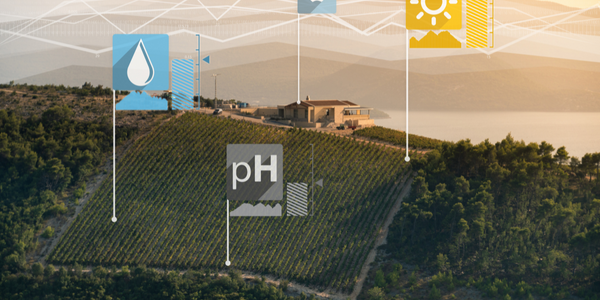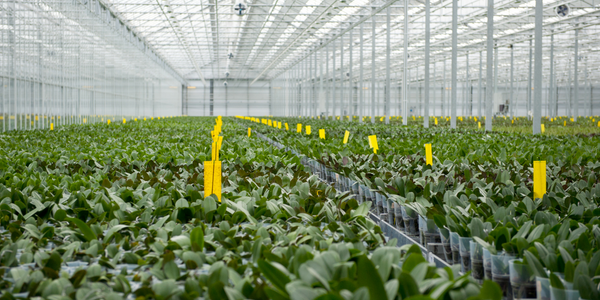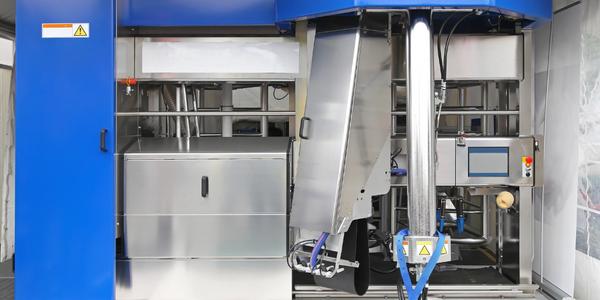技术
- 传感器 - 环境传感器
- 传感器 - 湿度传感器
适用行业
- 农业
- 建筑物
适用功能
- 设施管理
- 质量保证
用例
- 智能灌溉
- 视觉质量检测
服务
- 系统集成
- 测试与认证
关于客户
8Farm 是一家专门种植新鲜香草的室内农业公司。该公司运营面积为 45 平方米,采用 8 个溢流和排水型种植塔,每个塔有 3 层 2 平方米托盘。在照明方面,他们在每个单元的每一层都使用了 2 个 2 米长的 LED 照明灯具。有一个灌溉水箱,水从这里分配到所有单元。对于营养剂量,他们每天早上用手持式探头测量 pH 和 EC 水平,并手动添加必要的营养。由于计时器故障和湿度控制不足,该公司在保持农作物产量和质量稳定方面面临着挑战。
挑战
8Farm 是一家室内农业公司,在保持作物产量和质量稳定方面面临着挑战。该公司使用 8 个洪水和排水型种植塔在 45 平方米的面积内种植新鲜药草,一直面临计时器故障和湿度控制不足的问题。这些问题导致其产品出现叶片发黑、枯萎、不生长等问题。年平均收成700公斤左右,有时因品质差而卖不出去。该公司需要一种能够更好地控制生长条件的解决方案,以提高产量和质量并确保稳定的收成。
解决方案
8Farm 采用了 ForFarming 开发的一款基于云的物联网软件 Farmio。 Farmio 使设施实现自动化,以更少的努力和使用更少的资源种植更高质量的植物并提高收成产量。它更有效地控制设施的照明、灌溉、施肥和 HVAC 设备,并消除光、水和养分的过度使用,从而最大限度地减少浪费。 8Farm 使用简单的通信设备将 Farmio 集成到他们的设施中,并在单个云平台上组合照明、灌溉、施肥和空调设备。新系统使他们能够更灵活地控制灌溉时间、自动添加养分并优化控制湿度。该系统还持续记录所有环境条件的数据,并在数值超出所需范围时向8Farm发送通知。
运营影响
数量效益

Case Study missing?
Start adding your own!
Register with your work email and create a new case study profile for your business.
相关案例.

Case Study
Intelligent Farming with ThingWorx Analytics
Z Farms was facing three challenges: costly irrigation systems with water as a limited resource, narrow optimal ranges of soil moisture for growth with difficult maintenance and farm operators could not simply turn on irrigation systems like a faucet.

Case Study
Energy Saving & Power Monitoring System
Recently a university in Taiwan was experiencing dramatic power usage increases due to its growing number of campus buildings and students. Aiming to analyze their power consumption and increase their power efficiency across 52 buildings, the university wanted to build a power management system utilizing web-based hardware and software. With these goals in mind, they contacted Advantech to help them develop their system and provide them with the means to save energy in the years to come.

Case Study
Greenhouse Intelligent Monitoring and Control Solution
Farming Orchids is the most successful form of precision farming in Taiwan, and also the most exported flower. Orchids need a specific temperature and humidity conditions to grow and bloom, and its flowering time may not be in line with market demands, so the price collapses when there is overproduction. Therefore, some farmers began to import automated greenhouse control systems for breeding and forcing, which not only improves quality, but also effectively controls the production period and yield to ensure revenue. In 2012, an orchid farmer built a Forcing Greenhouse of about 200 pings (approximately 661 Square Meters) in Tainan, Taiwan. The system integrator adopted Advantech’s APAX-5000 series programmable automation controllers to build the control platform, coupled with Advantech WebAccess HMI/SCADA software, to achieve cloud monitoring. The staff of the orchid field can monitor important data anytime via smart phone, iPad, and other handheld devices, and control the growth and flowering conditions. System requirements: In the past, most environmental control systems of orchid greenhouses in Taiwan used PLCs (Programmable Logic Controller) with poorscalability and control, and could not be connected to the Internet formonitoring from the cloud. For advanced database analysis and networking capability, the PC platform must be adopted. Therefore, PAC Systems (Programmable Automation Controller) with both PLC programming capabilities andPC functions is a better choice.The environmental control of the Orchid greenhouse switches on and off devices like fan, shade net, cooling/heat pump, liquid flow control, water-cooling wall etc. It is controlled by a control panel of electric controllers, and is driven by a motor, to adjust the greenhouse temperature, humidity, and other environmental conditions to the set parameters.

Case Study
Intelligent Building Automation System and Energy Saving Solution
One of the most difficult problems facing the world is conserving energy in buildings. However, it is not easy to have a cost-effective solution to reduce energy usage in a building. One solution for saving energy is to implement an intelligent building automation system (BAS) which can be controlled according to its schedule. In Indonesia a large university with a five floor building and 22 classrooms wanted to save the amount of energy being used.









